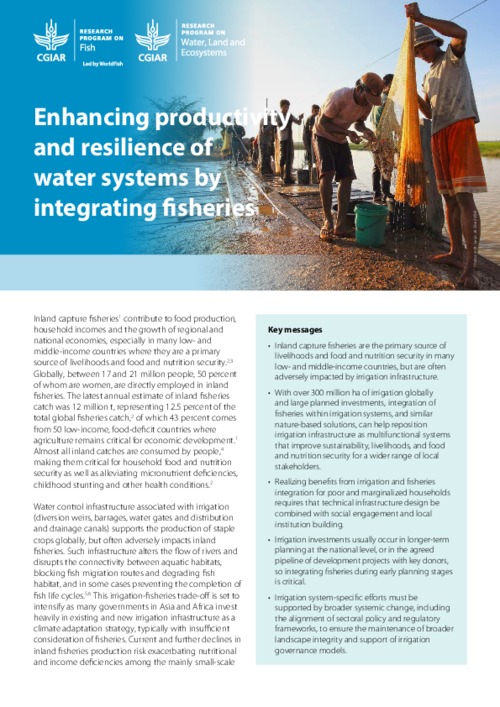Enhancing productivity and resilience of water systems by integrating fisheries

Inland capture fisheries are the primary source of livelihoods and food and nutrition security in many low- and middle-income countries, but are often adversely impacted by irrigation infrastructure.
With over 300 million ha of irrigation globally and large planned investments, integration of fisheries within irrigation systems, and similar nature-based solutions, can help reposition irrigation infrastructure as multifunctional systems that improve sustainability, livelihoods, and food and nutrition security for a wider range of local stakeholders.
Realizing benefits from irrigation and fisheries integration for poor and marginalized households requires that technical infrastructure design be combined with social engagement and local institution building.
Irrigation investments usually occur in longer-term planning at the national level, or in the agreed pipeline of development projects with key donors, so integrating fisheries during early planning stages is critical.
Irrigation system-specific efforts must be supported by broader systemic change, including the alignment of sectoral policy and regulatory frameworks, to ensure the maintenance of broader landscape integrity and support of irrigation governance models.
Permalink
Date Available
Type
Publisher
Copyright
CC-BY-NC-4.0
Research Themes
Topics
Language